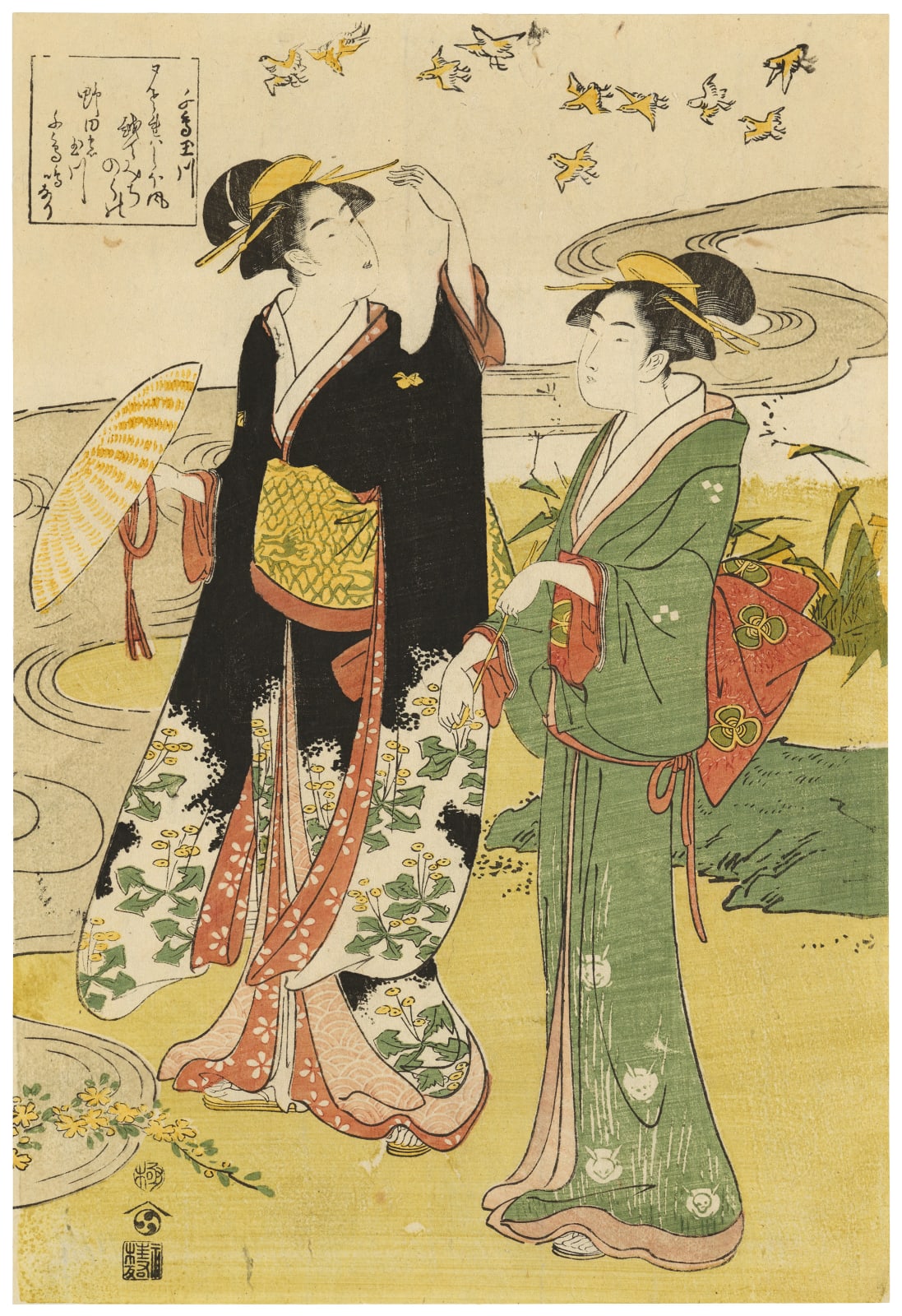Chobunsai Eishi (1756-1829)
The Jewel River of Plovers (Chidori no Tamagawa), from an untitled series of Six Jewel Rivers (Mu Tamagawa), circa 1795
Woodblock print
Date: circa 1795
Publisher: Nishimuraya Yohachi (Eijudo)
Censor's seal: kiwame (approved)
Date: circa 1795
Publisher: Nishimuraya Yohachi (Eijudo)
Censor's seal: kiwame (approved)
Vertical aiban:
32.3 x 21.9 cm. (12 ¾ x 8 ⅝ in.)
32.3 x 21.9 cm. (12 ¾ x 8 ⅝ in.)
£ 2,800.00
The term tamagawa (jewel river) is often used in classical Japanese poetry to describe a particularly beautiful river. By the Edo period six specific rivers had become identified as the...
The term tamagawa (jewel river) is often used in classical Japanese poetry to describe a particularly beautiful river. By the Edo period six specific rivers had become identified as the Mutamagawa and were popularised by poets and artists.
The poem by Priest Noin (998–1050) reads:
Yu sareba
shiokaze koshite
Michinoku no
Noda no Tamagawa
chidori naku nari
Evening descends
as winds from the sea
blow across Jewel River
of Noda in Michinoku
where flocks of plovers cry
(Translation by John T. Carpenter)
Another impression of the same print is in the collection of The Portland Art Museum, accession no. 32.247, go to:
http://portlandartmuseum.us/mwebcgi/mweb.exe?request=record;id=6785;type=101
The poem by Priest Noin (998–1050) reads:
Yu sareba
shiokaze koshite
Michinoku no
Noda no Tamagawa
chidori naku nari
Evening descends
as winds from the sea
blow across Jewel River
of Noda in Michinoku
where flocks of plovers cry
(Translation by John T. Carpenter)
Another impression of the same print is in the collection of The Portland Art Museum, accession no. 32.247, go to:
http://portlandartmuseum.us/mwebcgi/mweb.exe?request=record;id=6785;type=101
Provenance
A Distinguished Private Collection1
of
2

